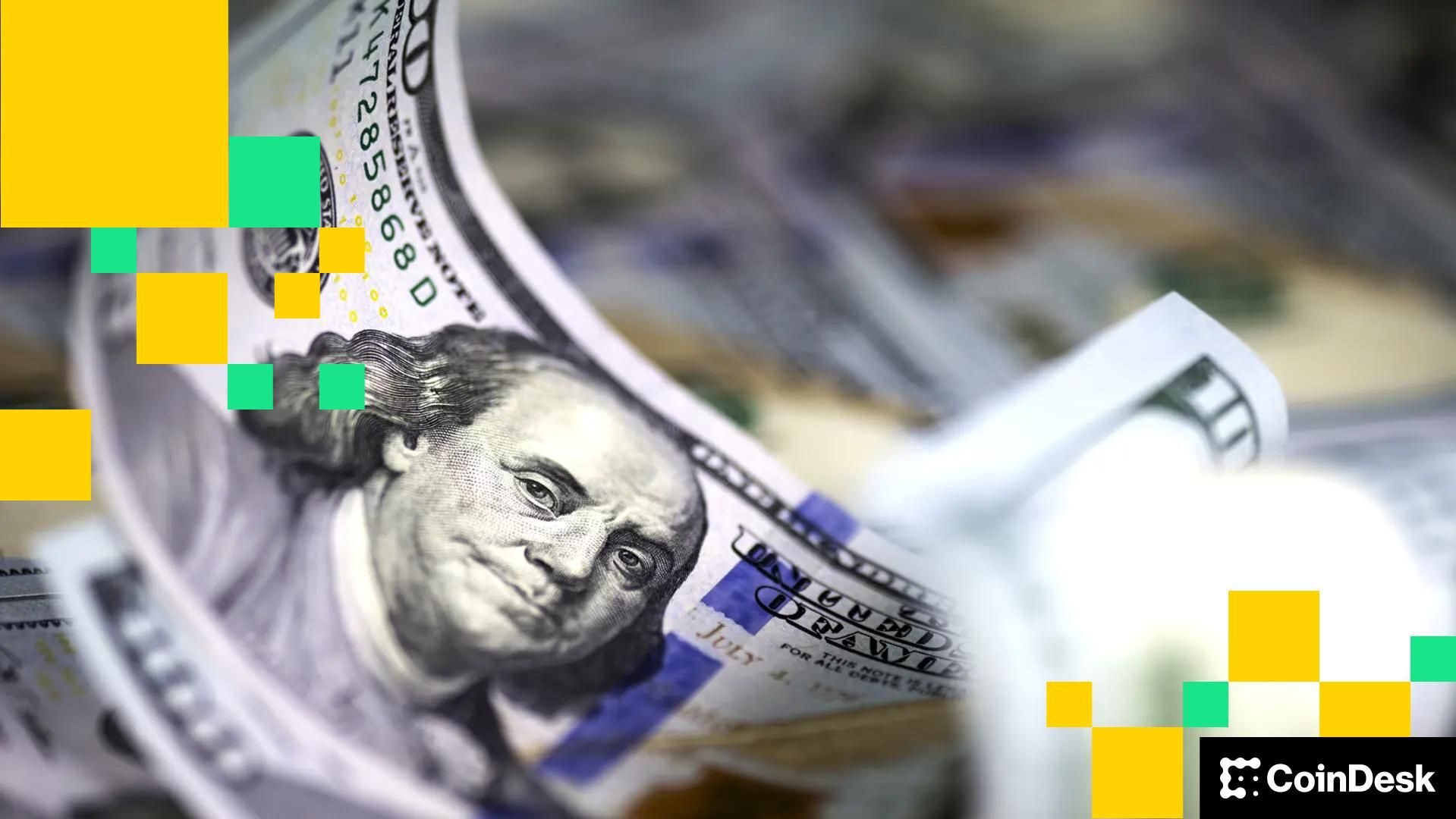What Does a Stablecoin-Led Contagion Look Like?
Not all agree with some recent sentiment that stablecoins pose a threat to global financial stability.
By Olivier Acuna|Edited by Sheldon Reback, Stephen Alpher
Nov 23, 2025, 2:00 p.m.

- Central banks warn that volatility from tariffs could lead to a stablecoin run, triggering fire-sales of U.S. Treasuries.
- The rapid growth of stablecoins poses systemic risks, with potential for large redemptions affecting global financial stability.
- Coinbase Chief Policy Officer, however, said that compared to the traditional risky loans some banks often make, stablecoins are much safer.
As global markets continue to absorb the prospect of new U.S. trade barriers, central bank officials in Europe and Asia warn that the volatility they create in the bond markets could expose another hidden risk.
Similar to Lehman Brothers’ 2008 debacle, which triggered a $600 billion money-market fund run, forced the sale of commercial paper, and froze global credit markets, some central bank officials believe a stablecoin run could unleash a far larger, instantaneous fire sale of U.S. Treasuries.
STORY CONTINUES BELOW
While only time will tell if such a large-scale contagion will happen again, some recent events have shown a glimpse of what that might look like.
For example, Donald Trump’s tariff threats are not aimed at crypto; however, the shockwaves they cause may be inadvertently hitting the digital dollar economy much harder than anyone expected. The U.S. president’s Oct. 10 threat to hit China with fresh 100% tariffs wiped nearly $20 billion off the crypto market in under a day.
Another relevant stress event was USDC’s depeg of March 2023 following the Silicon Valley Bank failure, when uncertainty over reserve access drove the token as low as $0.88. That incident remains an example of how real-world financial shocks can trigger sudden redemptions in even the largest fiat-backed stablecoins.
With most stablecoins being the latest hot trend in crypto and many of the major ones pegged to the USD, some warn that the risk of another global contagion might be real.
Dutch National Bank (DNB) Governor Olaf Sleijpen, one of the 26 European Central Bank’s decision-making members, told the Financial Times a run on dollar-pegged tokens could trigger fire-sales of U.S. Treasury bonds and force central banks to rethink their monetary policies entirely.
If tariffs push yields higher and liquidity lower, which is the classic response to trade shocks, Treasury bills become less stable precisely when they are needed most. “If stablecoins are not that stable,” Sleijpen cautioned, “you could end up in a situation where the underlying assets need to be sold quickly.”
Stephen Miran, a U.S. Federal Reserve Governor, appeared to preemptively refute that statement, saying, stablecoins are an “innovation [that] has been unfairly treated as a pariah by some, but stablecoins are now an established and fast-growing part of the financial landscape.”
A recent DNB report highlights that while “the stablecoin market is on a rocket trajectory” that “could hit $2 trillion within three years under the U.S. GENIUS Act”, a “huge risk lurks beneath its shiny veneer” because of its “explosive growth and the concentration as Tether and Circle control 80%.”
“Rapid expansion comes with strings attached,” the report added, noting the “risk of mass redemptions, like after the Silicon Valley Bank collapse, which could trigger sell-offs of U.S. Treasuries, stress crypto exchanges, and ripple through European financial institutions.”
Miran rejected the notion, saying that, “because GENIUS Act payment stablecoins do not offer yield and are not backed by federal deposit insurance, I see little prospect of funds broadly fleeing the domestic banking system.”
Other financial institutions have raised similar concerns. The Bank for International Settlements (BIS) and the Reserve Bank of Australia (RBA) agreed that global economic stress increases stablecoin use abroad while eroding the value and liquidity of the assets backing them.
In a June 2025 report, the BIS said, “A loss of confidence in stablecoins could lead to large and sudden redemptions, potentially disrupting the world’s most important government bond market.”
Trump’s tariff threats raise that stress. In a globalized economy in which cross-border trade becomes more volatile is also one in which dollar-tethered tokens become more attractive, as well as more fragile, creating pressure that could push the $310 billion stablecoin sector into global systemic relevance faster than regulators are prepared for, the RBA and BIS coincided.
The RBA notes in an October report that the volume of stablecoins grew more than 50% in 12 months to June 2025 and warns of the risks this growth represents. It adds that “industry projections of growth range from $500 billion by 2028 to $4 trillion by 2035”.
The BIS said that several industry forecasts put the market at $2 to $3 trillion by 2030, a scale at which “even a moderate redemption shock could rival the Treasury market stress episodes seen in March 2020.”
The Australian central bank agrees with Sleijpen, saying “A sudden decline in sentiment towards stablecoins could trigger asset fire-sales with the potential to spill over into repo and other core US funding markets.”
If such a scenario plays out and a fire sale is triggered, the GENIUS Act ensures that the U.S. government will have to bail out the stablecoin issuers and their holders on a scale of hundreds of billions of dollars.
However, in Coinbase Chief Policy Officer Faryar Shirzad’s opinion, “full-reserve backing makes stablecoins safer than banking” and their “broader adoption actually reinforces stability.”
He further explained: “banks make long-term, often risky loans to private individuals and corporations, which exposes them to both credit and liquidity risks. In contrast, stablecoin issuers typically hold short-term government bonds, which are virtually risk-free and highly liquid.”
More For You
Nov 14, 2025

What to know:
- As of October 2025, GoPlus has generated $4.7M in total revenue across its product lines. The GoPlus App is the primary revenue driver, contributing $2.5M (approx. 53%), followed by the SafeToken Protocol at $1.7M.
- GoPlus Intelligence’s Token Security API averaged 717 million monthly calls year-to-date in 2025 , with a peak of nearly 1 billion calls in February 2025. Total blockchain-level requests, including transaction simulations, averaged an additional 350 million per month.
- Since its January 2025 launch , the $GPS token has registered over $5B in total spot volume and $10B in derivatives volume in 2025. Monthly spot volume peaked in March 2025 at over $1.1B , while derivatives volume peaked the same month at over $4B.
More For You
By Francisco Rodrigues, AI Boost|Edited by Aoyon Ashraf
1 hour ago

This gap could create a “price dislocation” between on-chain and traditional markets, leading to potential losses or arbitrage opportunities.
What to know:
- The growing trend of real-world asset (RWA) tokenization may be overlooking a critical risk: the “weekend gap” between 24/7 crypto markets and traditional markets that are closed on weekends.
- This gap could create a “price dislocation” between on-chain and traditional markets, leading to potential losses or arbitrage opportunities.
- Oracle providers’ weekend price feed freezes could exacerbate the issue, highlighting the need for more robust oracle architectures to manage the gap between open protocols and closed traditional markets.
-
Back to menu
Prices
-
Back to menu
-
Back to menu
Indices -
Back to menu
Research
-
Back to menu
Consensus 2026 -
Back to menu
Sponsored
-
Back to menu
Videos -
Back to menu
-
Back to menu
-
Back to menu
Webinars
Select Language












